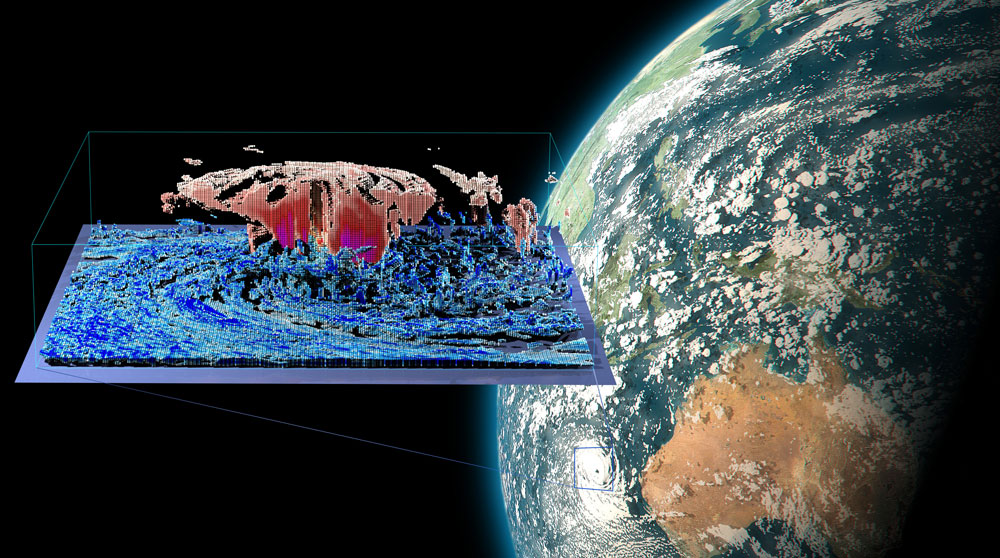This story originally appeared on the Sandia National Laboratories website.
Simulations show a year’s climate in a research day

Focused on improving the accuracy of climate predictions, a Sandia-led computational team recently achieved a major milestone with a cloud-resolving model they ran on Frontier, the world’s first exascale supercomputer.
“We have created the first global cloud-resolving model to simulate a world’s year of climate in a day,” said Sandia researcher Mark Taylor, chief computational scientist of the Energy Exascale Earth System Model, or E3SM, an eight-lab project supported by the DOE’s Office of Science for the development of advanced climate models. “We’re ushering in a new era of accuracy.”
The E3SM model simulates critical aspects of Earth’s climate system that might impact conditions in the U.S. in the coming decades, including extreme temperatures, droughts, floods and a rise in sea level.
Clouds play a critical role in Earth’s climate system, impacting weather patterns and precipitation. “Traditional Earth system models struggle to represent clouds accurately,” Mark said. “This is because they cannot simulate the small overturning circulation in the atmosphere responsible for cloud formation and instead rely on complex approximations of these processes.”
The E3SM group developed an improved cloud-resolving atmosphere model named SCREAM, for Simple Cloud Resolving E3SM Atmosphere Model.

“This next-generation program has the potential to substantially reduce major systematic errors in precipitation found in current models,” Mark said, “because of its more realistic and explicit treatment of convective storms and the atmospheric motions responsible for cloud formation.”
These motions and their interactions determine many of the characteristics of regional precipitation, he said.
But the new model by itself was not enough. Running a simulation that resolves clouds globally over many decades requires tremendous computing resources to run in a reasonable amount of time. An exascale computer, executing more than a quintillion calculations per second — that’s the numeral 1 followed by 18 zeros — was just what was needed.
Frontier, built under DOE auspices at Oak Ridge National Laboratory, fills that bill, with more than 9,000 compute nodes. An E3SM team at Sandia worked to ensure SCREAM would run well on Frontier, other graphics processing unit-based systems and more conventional central processing unit-based supercomputers.
Frontier is expected to become a production-ready machine later this year but is not yet open for general access. However, through the DOE’s Exascale Computing Project, the E3SM developers had a 10-day window to test the performance of the new SCREAMv1 model running at a global 3.25-kilometer resolution.
They obtained record-setting performance, with the atmosphere component running at greater than a simulated year per day.
SCREAM’s graphics processing unit performance, coupled with the exascale machine, for the first time will enable multiyear climate simulations with a more accurate treatment of clouds, leading to more accurate predictions of future weather and climate.
# # #Author: Neal Singer, Staff Writer, Sandia National Laboratories
This work was supported by the U.S. Department of Energy’s Office of Science, through the Biological and Environmental Research program as part of the Atmospheric System Research program.

